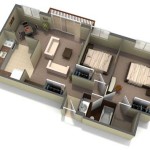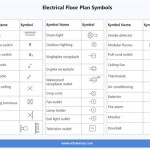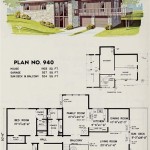Creating a Comprehensive House Floor Plan: A Detailed Guide
When designing or renovating your home, having a well-defined floor plan is crucial. It serves as a blueprint for the layout, functionality, and aesthetics of your living space. Here is a comprehensive guide to help you create an effective house floor plan:
1. Determine Your Needs and Preferences:
Before you start drawing, take time to consider your lifestyle, habits, and preferences. Determine the number of bedrooms, bathrooms, and other rooms you need. Think about the type of spaces you want, such as open-plan living areas, separate dining rooms, or home offices.
2. Measure and Draw the Existing Floor Plan:
If you are working with an existing home, accurately measure and draw the current floor plan. This will provide a base to work from and help you identify potential changes you want to make.
3. Establish a Scale:
Choose a scale that allows you to clearly represent the dimensions of your home. Common scales include 1:50, 1:20, and 1:10 (1/4 inch = 1 foot).
4. Draw the Walls and Openings:
Using your chosen scale, draw the exterior walls, interior walls, doors, and windows. Ensure that the thickness of the walls is accurately represented.
5. Add Furniture and Appliances:
To visualize the functionality of your floor plan, draw in furniture and appliances to scale. This will help you assess the flow of traffic and the overall functionality of the space.
6. Consider Lighting and Ventilation:
Mark the location of windows and light fixtures on your floor plan. Natural light and proper ventilation are essential for creating a comfortable and healthy living environment.
7. Plan for Storage and Utility Spaces:
Allocate space for storage closets, pantries, and utility rooms. These spaces are crucial for maintaining organization and functionality.
8. Seek Professional Advice (Optional):
If you are inexperienced or uncertain about any aspect of your floor plan, consider consulting an architect or interior designer. They can provide professional guidance and ensure technical accuracy.
9. Use Digital Floor Planning Tools:
There are various digital floor planning tools available that can simplify the process. These tools allow you to draw and manipulate your floor plan digitally, making it easier to visualize and experiment with different layouts.
10. Review and Refine:
Once you have a draft floor plan, take time to review it critically. Consider the flow of traffic, the functionality of each space, and the overall aesthetics. Make necessary adjustments until you are satisfied with the design.
By following these steps, you can create a comprehensive house floor plan that meets your needs and enhances the livability of your home. Remember that the best floor plan is one that is customized to your unique style and requirements.

Floor Plan Creator And Designer Free Easy App

Floor Plans Types Symbols Examples

Floor Plans Types Symbols Examples

Blender For Noobs 10 How To Create A Simple Floorplan In

Floor Plans Types Symbols Examples

Floor Plan Creator And Designer Free Easy App

Easy Home Building Floor Plan Cad Pro

How To Create A Small House Floor Plan That Works For You

House Floor Plans Your Best Guide To Home Layout Ideas

Floor Plan Create 2d 3d Plans Autodesk








